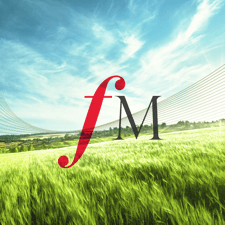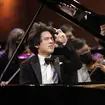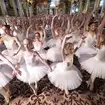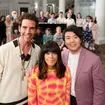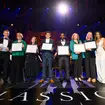The Full Works Concert - Wednesday 30 April 2014
Schubert's Unfinished Symphony and Mussorgsky's Pictures at an Exhibition are on offer in tonight's Concert.
Known as the Unvollendete (‘Unfinished’), the Symphony No.8 by Schubert - pictured - might easily have been the Unbekannt (‘Unknown’) were it not for fate. A full 37 years after Schubert’s death, the world counted Schubert’s symphonies on just eight fingers, rather than nine. Then, in a case reminiscent of a rediscovered Picasso, a 76-year-old man, possibly in the belief that he was on his way out, came forward to a Viennese conductor with the astonishing news that he had a Schubert symphony. Well, part of one. Schubert had sent it to him, some 43 years earlier. Why had he not come forward before? Was it anything to do with the fact that the music was incomplete with evidence of pages simply having been ripped out? It is still as much of an enigma as anything Elgar ever came up with. Schubert had some six years of his life remaining after he started working on the piece, but he never completed it. One theory, still argued over today, is that the missing fourth movement is alive and well-known now as the Entr’acte from Schubert’s incidental music to the play Rosamunde. Who knows?
Love in Spring was specially written for the Japanese violinist Takako Nishizaki. By using various folk-songs and operatic themes from the North and South of China, the composer attempts to show the great beauty of Chinese melodies transcribed for the solo violin.
Mendelssohn's Piano Concerto No.2 in D minor was written in 1837 and premiered at the Birmingham Festival later that year. Unusually for Mendelssohn, who often produced his compositions quickly, the concerto took him a great deal of effort. He desired to produce a work worthy of the commission from Birmingham and impress English audiences. He reworked the concerto several times including after the premiere and before its eventual publication. Despite being overshadowed by other Romantic era Piano Concertos and the relative simplicity of the piano part, it is nevertheless frequently performed and recorded.
Thomas Arne, best known for the patriotic song Rule, Britannia! was the leading British theatre composer of the 18th century, working at Drury Lane and Covent Garden. Tonight we hear his Sonata in G major played by London Baroque.
Modest Mussorgsky's Pictures at an Exhibition was written in honour of the composer's friend - a painter called Vladimir Hartmann who died at the peak of his career, aged just 39. The loss of not just a close friend but an artistic inspiration had a deep effect on Mussorgsky - pictured above. By way of a tribute, he decided to compose his set of piano pieces Pictures at an Exhibition. Nowadays, however, Pictures at an Exhibition is most often heard not in its original piano version but in orchestrated form. Many musicians, from Henry Wood to Leopold Stokowski, have arranged the work for full orchestra, but it’s far and away the 1922 version by Maurice Ravel that receives the most regular performance and praise today. It's the version we will hear tonight.
Franz Schubert: Symphony No.8 in B minor D.759
Nikolaus Harnoncourt conducts the Royal Concertgebouw Orchestra
Xiaogu Zhu: Love in Spring
Violin: Takako Nishizaki
Fan Chengwu conducts the Shanghai Conservatory Symphony Orchestra
Felix Mendelssohn: Piano Concerto No.2 in D minor Opus 40
Howard Shelley directs the London Mozart Players from the piano
Thomas Arne: Sonata in G major Opus 3 No.2
London Baroque
Modest Mussorgsky: Pictures at an Exhibition
Simon Rattle conducts the Berlin Philharmonic Orchestra
